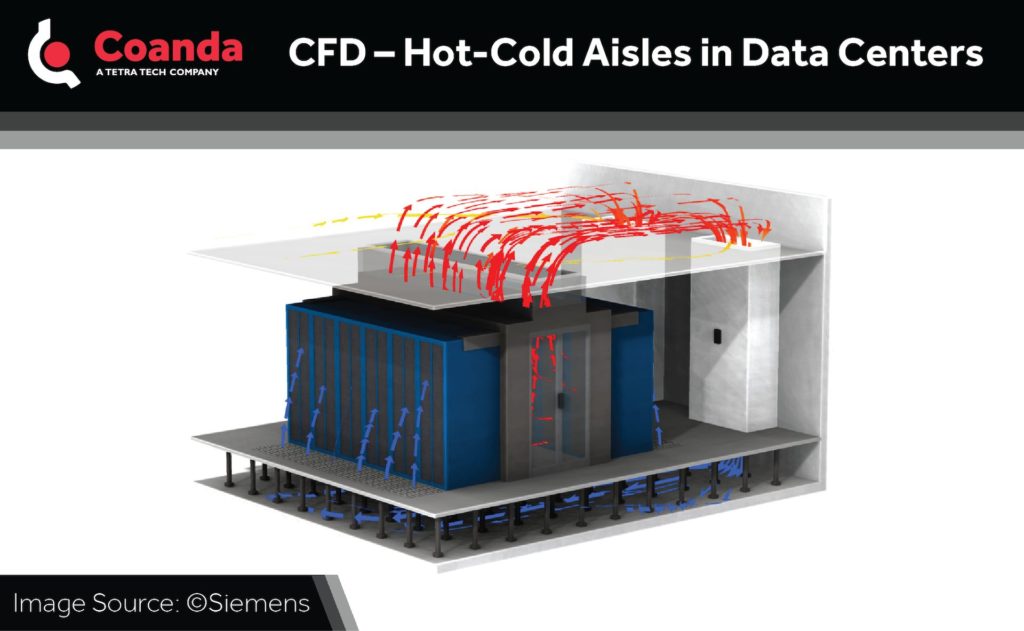CFD for Data Centers
Posted on April 13, 2021 Computational Fluid Dynamics
This post was originally published in two parts which have been combined below
Part 1
Computational Fluid Dynamics (CFD) is a powerful tool used to perform fluid flow and heat transfer analyses for many industrial processes. The technique involves the creation of a 3D CAD model of the problem being considered, upon which mathematical models representing conservation of mass, momentum and energy are solved to obtain solutions for variables such as velocity, pressure and temperature.
These CFD simulations are typically run on high performance
computing (HPC) systems, which are often housed in large data centers containing racks of computer servers or computational nodes along with disk storage systems and electrical power supplies.
Such data centers require specially designed environmental controls, with hot and cold aisle containment, to prevent overheating of the equipment. CFD is used to analyze and design the very data centers that the simulations are run on. Air handling equipment in these data centers frequently consists of banks of large centrifugal fans, with direct-drive electrical motors, and the interaction of the fans can be an important parameter in the optimization of the air flow within the data center.
Coanda has successfully modelled fan banks to accurately predict the flow and temperature fields in large data centers.
Part 2
CFD – Hot-Cold Aisles in Data Centers
The high performance computing (HPC) systems used to run CFD simulations are often housed in large data centers containing racks of computer servers, disk storage systems and electrical power supplies. These data centers require specially designed environmental controls—with hot and cold aisle containment—to prevent overheating of the electrical equipment.
The goal of both hot and cold aisle containment is to separate the cold supply air from the hot exhaust of the computing equipment, thus creating a predictable and controlled air temperature at the intake of the equipment. Either the hot or the cold aisle can be contained, but it is more effective to contain the hot aisle. Hot aisle containment requires doors at the end of the hot aisle and some type of ductwork above the hot aisle to direct the hot air through the cooling equipment. Thus, the open area of the room is a cold environment, the return air is not mixed, and the more natural path of hot air rising and cold air sinking, results in a more efficient cooling system.
Coanda utilizes hot aisle containment for its HPC cluster and has simulated large data centers with this configuration.



